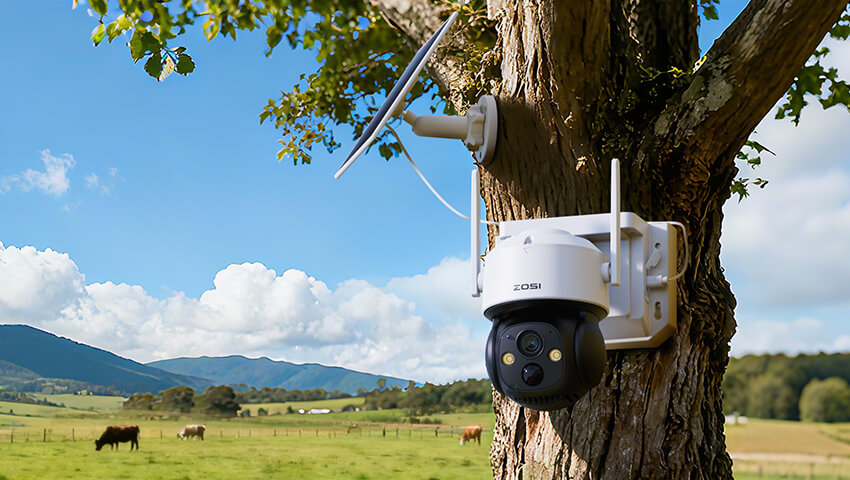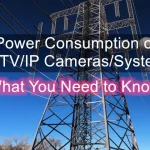In the age of smart homes and remote monitoring, “wire-free” or “no power supply” security cameras are becoming increasingly popular. Many people are drawn to the idea of a completely wireless setup — no cables, no drilling, and no limits on where you can install them.
But what does “without power supply” really mean? Can a camera truly work with no electricity at all? Let’s break down how these systems work, their advantages, and what you should consider before buying one.
Contents
⚙️ What Does “Without Power Supply” Really Mean?
When we hear “no power supply,” it’s easy to imagine a camera that runs on magic. But in reality, all cameras need energy — the key difference lies in where that power comes from.
There are three main types of security cameras:
Wired cameras: They require constant power and data transmission via cables.
Wireless cameras: They send video data through Wi-Fi but still need to be plugged in for power.
Truly wire-free cameras: They use internal batteries or solar panels instead of a power cord.
So, when we say “without power supply,” we usually mean no direct electrical wiring — not “no power at all.”
☀️ How Do Power-Free Security Cameras Work?
1. Battery-Powered Cameras
These cameras rely on rechargeable or replaceable batteries. They typically last from a few weeks to several months depending on usage, resolution, and motion detection frequency.
They’re perfect for users who want easy installation and flexibility, but they do require occasional recharging.
2. Solar-Powered Cameras
Solar cameras are equipped with built-in or external solar panels that convert sunlight into energy. The energy charges an internal battery that powers the camera day and night.
They’re an excellent option for outdoor surveillance — especially in sunny locations or remote areas without electrical outlets.
3. Hybrid Systems
Some advanced models combine solar panels with battery backup. When the sun isn’t shining, the battery takes over, ensuring 24/7 operation without manual charging.
✅ Advantages of Security Cameras Without Power Supply
Hassle-free installation: No cables, no drilling, no electricians needed.
Flexible placement: Install them anywhere — farms, cabins, RVs, or construction sites.
Eco-friendly: Solar-powered systems use renewable energy and reduce electricity bills.
Ideal for off-grid living: Perfect for places where traditional wiring isn’t possible.
Cost-effective: Save on long-term maintenance and power consumption.
⚠️ Limitations and Challenges
While wire-free cameras are convenient, they’re not perfect. Here are a few limitations to keep in mind:
Battery maintenance: Batteries must be recharged periodically.
Recording limits: To save power, many rely on motion-triggered recording instead of continuous 24/7 monitoring.
Weather dependency: Solar cameras perform best in sunny conditions; cloudy weather can affect charging.
Connectivity issues: Reliable Wi-Fi or 4G signals are crucial for remote viewing.
If you understand these trade-offs and maintain them properly, wire-free systems can still provide excellent long-term performance.
🏡 Best Use Cases
Remote farms and ranches
Construction sites and temporary setups
RVs, boats, and vacation homes
Driveways, backyards, or spots far from outlets
Basically, anywhere electricity doesn’t reach — these cameras can.
🔍 Top Picks for 2025
Here are some of the most trusted “no power supply” cameras available this year:
Model Power Source Resolution Connectivity Key Feature
ZOSI C291 Solar Cam Solar + Battery 4K UHD Wi-Fi / 4G Long battery life, color night vision
Arlo Go 2 Battery + Solar 2K 4G LTE Works without Wi-Fi
Reolink Go PT Ultra Solar + Battery 4K 4G LTE Pan & tilt remote control
These models show how far the technology has come — offering clarity, mobility, and independence from traditional power sources.
🧰 Installation Tips
To get the best performance out of your power-free camera:
Mount solar cameras where sunlight is strongest.
Keep solar panels clean and free from dust or snow.
Ensure a stable Wi-Fi or 4G connection.
Check battery levels monthly and update firmware regularly.
A little maintenance goes a long way toward keeping your camera reliable year-round.
🧭 Conclusion
Security cameras “without power supply” are changing the way we think about home protection. They’re not truly powerless — instead, they’re self-powered, using solar energy or batteries to operate independently.
Whether you’re protecting a remote property or just want a cleaner installation at home, these cameras provide flexibility and peace of mind without the hassle of wires.
🌞 Looking for a reliable solar-powered camera? Explore the latest wire-free models from ZOSI — built for easy installation, long-lasting power, and 24/7 smart protection wherever you need it.
💬 FAQ
Q: How long do the batteries last?
Most last 1–6 months depending on motion activity and weather conditions.
Q: Do solar cameras work at night?
Yes, they store energy during the day to power night vision after sunset.
Q: What if there’s no sun for several days?
The built-in battery keeps the camera running until sunlight returns.
Q: Can I use these cameras indoors?
Yes! Battery models work great indoors where you can’t easily plug in power cables.

